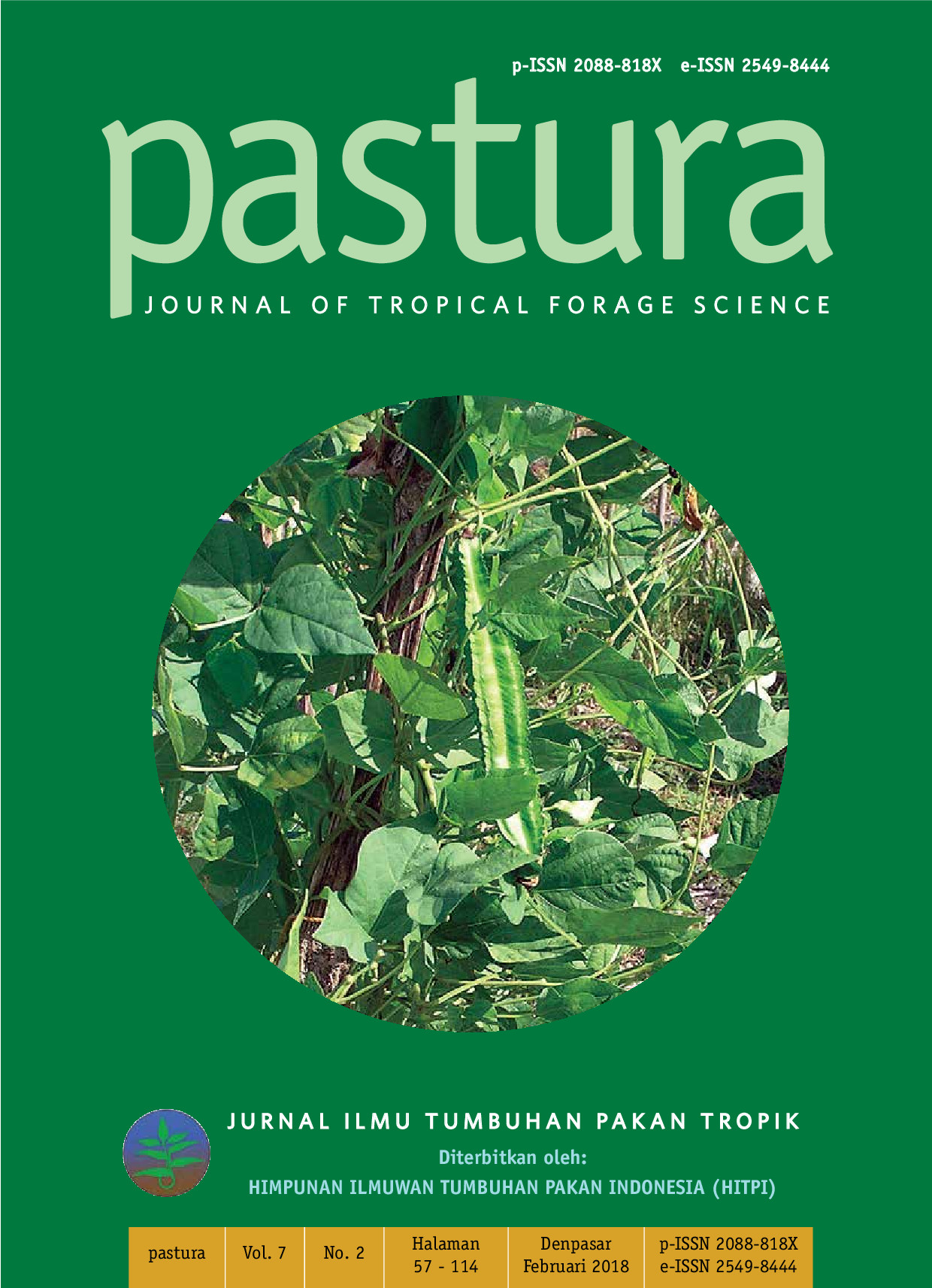PRODUKSI DAN NUTRISI HIJAUAN OKRA SEBAGAI PAKAN PADA SISTEM INTEGRASI TANAMAN-TERNAK
Abstract
The characteristics of crop-livestock systems is crop yield for food or vegetable, and stover or leaf for ruminant feed, being the manure used as organic fertilizer. Phosphorus (P) is the major plant nutrient and considered one of the primary factors limiting crop yields. Rock phosphate (RP) is one of some organic P fertilizer which could increased its solubility if mixed at the initial phase of manure decomposition process. The objective of the research was to investigate the influence of some kind of organic fertilizer on production and nutrient concentration of okra (Abelmoschus esculentus L) leaf as forage. A field experiment of randomized block design with 9 treatments and three replicates was done, and the treatments were T1 (RP), T2 (azolla compost), T3 (cow manure), T4 (goat manure), T5 (poultry manure), T6 (azolla+RP), T7 (cow manure+RP), T8 (goat manure+RP), T9 (poultry manure+RP). Okra leaf defoliated at 80 days after planting, and continued measured for fresh leaf production, nitrogen and phosphorus concentration. The results showed that the treatment significantly affected to the fresh leaf production, concentration of nitrogen and phosphorus. The result of DMRT showed that fresh leaf production, concentration of N and P significantly higher if fertilized by goat manure+RP (T8) and poultry manure+RP (T9) compared to another treatments.
Keywords: Abelmoschus esculentus L, rock phosphate, manure, nutrient, production





